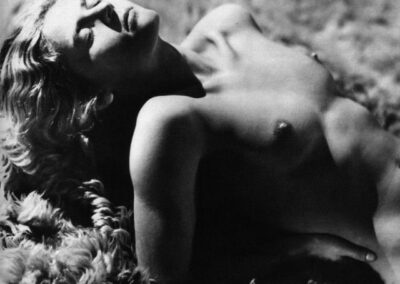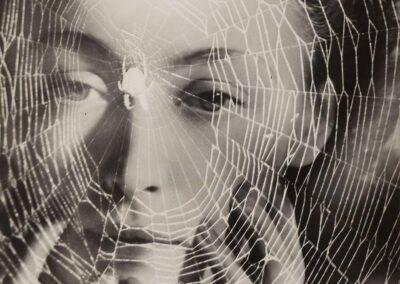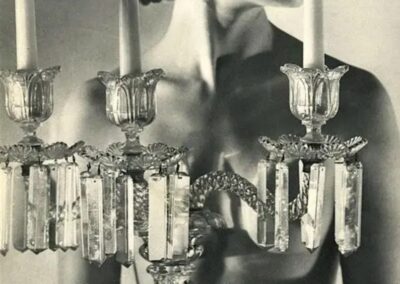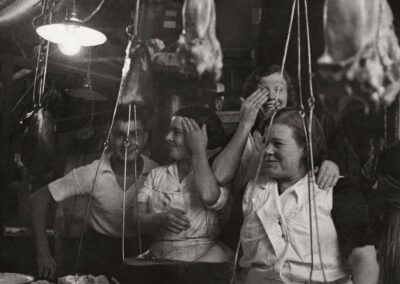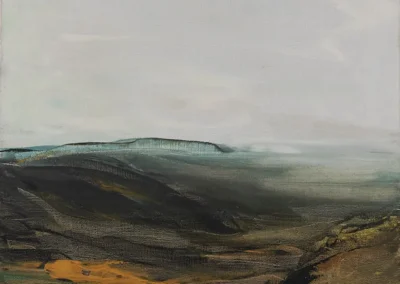Our next Artist You Need To Know is Dora Maar (1907 – 1997).
Born Henriette Théodora Markovitch, she was a French photographer, painter, and poet. Too often dismissed as ‘simply’ a model and muse for Pablo Picasso, any examination of her life and legacy will intersect with his life and work, but it’s necessary to state that Maar was a groundbreaking artist in her own right. She was a major part of the artistic and cultural community of Paris, often inspiring and collaborating with notable artists and writers such as Jean Cocteau, Man Ray and Georges Bataille.
From the Tate : “Maar’s photography and photomontages explore surrealist themes such as eroticism, sleep, the unconscious and the relationship between art and reality. Cropped frames, dramatic angles, unexpected juxtapositions and extreme close-ups are used to create surreal images. Contrasting with the idea of a photograph as a factual record, Maar’s scenes disorientate the viewer and create new worlds altogether.”
“All [Picasso’s] portraits of me are lies. They’re all Picassos. Not one is Dora Maar.”
Dora Maar’s Croatian-born father worked as an architect in Argentina, and her family spent a number of years there before returning to Paris in 1926. Maar took classes at Académie Julian and studied at the École de Photographie : by the late 1920s, she had begun to use her shortened sobriquet and focus primarily on photography which was already garnering her attention and praise. At this time, she worked with Pierre Kéfer (primarily from 1930 to 1934) and she was one of the contributors to art historian Germain Bazin’s book Le Mont Saint-Michel (1935). Later, she shared a studio space with Brassaï and during this period Emmanuel Sougez (one of the main forces behind the New Photography movement, which previously featured AYNTK Ilse Bing was associated with) was also her teacher and a major influence on Maar’s work.
She first exhibited her work at Galerie de Beaune in 1937 and from this point onward she established herself as “one of the most significant Surrealist photographers. She was a figure who truly embodied the “convulsive beauty” ideal expressed by [artist and intellectual] André Breton. Indeed, her photographs and photomontages highlighted Surrealism’s fascination with the macabre, with nightmares as well as dreams and fantasy, with the uncanny elements of urban life.” Maar was an accomplished artist who had exhibited often with the surrealists (between 1934 and 1937) when she met Pablo Picasso.
The mythology is hard to separate from the reality, in the story of these two artists. Some accounts describe it as ‘love at first sight’ : “legend has it that Maar sat in the famous literary watering hole, the Cafe les Deux Magots, playing a game where she stabbed a knife between her fingers to excite Picasso’s attention.” (from here)
Her influence on him is too often ignored in favour of platforming the reverse (none of this stopped Picasso from callously moving on to another women – the previously featured AYNTK Françoise Gilot being one of them – nor belittling Maar’s work by asserting “that every photographer was merely a painter waiting to be released”). But speaking of Maar in tandem with an exhibition of her work at the Tate, director Frances Morris, who interviewed Maar when she was in her 80s stated that “He trusted her. As much as being a sexual or emotional relationship, it was a collaborative one.”
From The Art Story: “For years she was known primarily for being the model and muse for many of his most important works. She was also the photographer who documented the stages in production of Guernica [arguably Picasso’s finest work and one of his best known), and acted as a catalyst for some of Picasso’s experiments in painting, especially those that alluded to aspects of photography. Thus, then and sometimes still now, both rightly and wrongly, Maar is labeled the muse, the mistress, the victim, and later the recluse. Her legacy however, is more complex than restrictive definitions allow, and she was more beautiful than Picasso’s tortured portraits of her lead the viewer to believe.”
“Maar made work that developed quickly from acute poetic street realism to otherworldly Surrealist manipulations. She was particularly apt at making work out of her own hidden and dizzying emotional interior – as well as the desire to retreat from it.” (from here)
Although her photographic collage works are the artworks that most immediately come to mind when considering this artist, Maar was also “known for using the camera to document reality and capture street life. Through her style and gaze, she was able to transform what she saw into something altogether different.” (from Smithsonian Magazine)
Maar was in a number of exhibitions throughout the 1940s and 1950, but that period also brought a great deal of difficult from which the artist never fully recovered. Her father returned to Argentina after the sudden passing of her mother, her friend (and frequent model) Nusch Éluard also unexpectedly passed, many of her friends within her artistic circle left Paris post WW II, and her relationship with Picasso came to an unpleasant end.
She suffered a nervous breakdown – primarily fueled by her estrangement from Picasso – but recovered with the help of the famous psychiatrist Jaques Lacan and settled in rural Provence, to a quieter, reclusive life. Maar produced some abstract landscape paintings and ‘melancholy still lifes’ during this period but sadly eschewed photography, the medium through which her exquisite and unusual character shines so brightly.” (from here)
In the 1980s, Maar did return to photo – based media : but during this period she became much more experimental, specifically with photograms (camera – less photography) and darkroom processes that were more abstract….She also made regular additions to her poetry notebook, which she called “a secret that remains a secret even to myself,” until her death.” (from here)
Maar has been acknowledged with a number of important retrospectives of her work posthumously. These include exhibitions at the Haus der Kunst (Munich, 2002); the Centre de la Vieille Charité (Marseille, 2002); the Centre Cultural Tecla Sala (Barcelona, 2002); the Centre Pompidou (Paris, 2019); and the Tate Modern (London, 2020).
Dora Maar died in 1997, at 89 years old. Throughout her life she created a vast and varied range of work, much of which was only discovered after her death. Her “works that established uneasy juxtapositions between the built environment and human figures within it greatly influenced future generations of photographers, including in particular Berenice Abbott, Diane Arbus, and Lee Friedlander.”
The previous quote is from The Art Story, where you can also learn more about her life and legacy.








